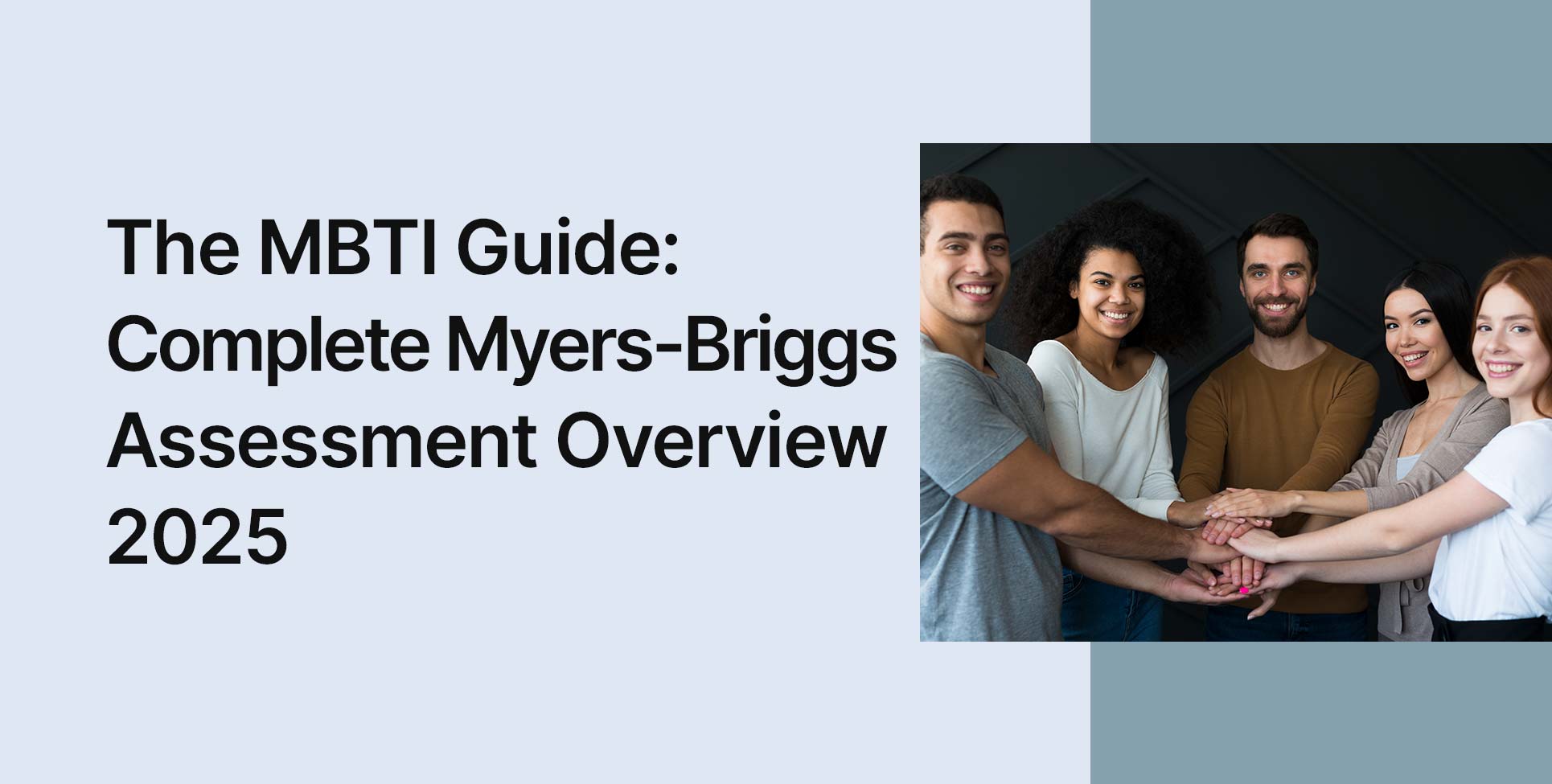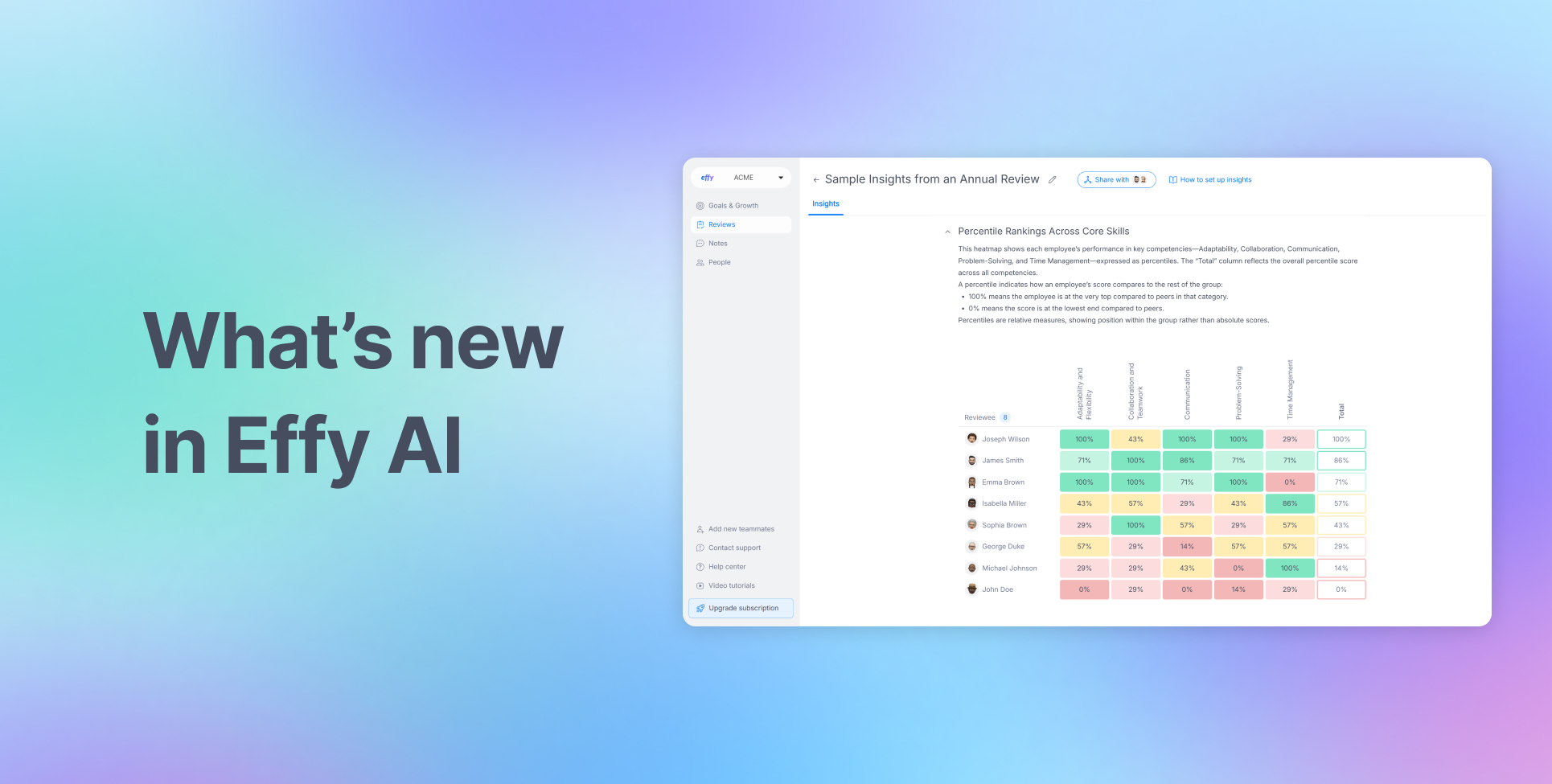Personality assessments have become increasingly popular in workplace environments, with organizations seeking better ways to understand team dynamics and improve collaboration. The MBTI system stands as one of the most recognizable personality tests globally.
Despite ongoing scientific debates about its validity, millions of professionals have used MBTI insights to enhance communication, resolve conflicts, and build stronger teams. Understanding this assessment's strengths and limitations helps organizations make informed decisions about implementation.
This comprehensive guide explores the MBTI test's origins, methodology, criticisms, and practical workplace applications. Whether you're considering using the MBTI personality type in your organization or simply curious about type preferences assessment tools, you'll gain valuable insights into this influential framework.
What is the MBTI test?
The Myers-Briggs Type Indicator (MBTI) is a comprehensive personality assessment tool that categorizes individuals into 16 distinct personality types based on their psychological preferences. Understanding the MBTI meaning helps companies improve team dynamics, communication, and overall workplace effectiveness.
This introspective questionnaire measures how people perceive the world around them and make decisions in various real-life situations. The assessment consists of forced-choice questions that reveal preferences across four key psychological dimensions, creating a unique four-letter personality code.
Originally designed for personal development and self-understanding, the MBTI has evolved into one of the most widely used personality theory in corporate environments to improve organizational structure. Companies worldwide utilize this tool for team building, leadership development, career counseling, and improving interpersonal workplace relationships.
The creators behind MBTI assessment
The Myers-Briggs Type Indicator was developed by the mother-daughter team of Katharine Cook Briggs and Isabel Briggs Myers during the 1940s and 1950s. Neither woman had formal training in psychology, but both were passionate about understanding human personality differences and helping people appreciate individual strengths.
Their work was heavily influenced by Swiss psychiatrist Carl Jung's 1921 theory of psychological types, which proposed that people have innate preferences for how they focus attention, gather information, make decisions, and other cognitive functions. The Myers-Briggs duo transformed Jung's complex theoretical framework into a practical four preferences tool.
How the MBTI test works
The MBTI assessment measures preferences across four dichotomies, creating 16 possible personality combinations. Participants answer forced-choice questions that reveal their natural tendencies, with each dimension representing opposing preferences that everyone uses but favors differently.
Extraversion (E) vs Introversion (I)
This dimension measures where you naturally direct your energy and attention. Extraverts typically gain energy from interacting with the external world and other people, while introverts prefer focusing inward and recharge through solitude and quiet reflection.
- Example question: "At a party, do you interact with many people or prefer deep conversations with a few close friends?"
Sensing (S) vs Intuition (N)
This scale determines how you prefer to take in and process information. Sensing Myers–Briggs personality types focus on concrete facts, details, and present realities, while intuitive types are drawn to patterns, possibilities, and future-oriented concepts and ideas.
- Example question: "When learning something new, do you prefer step-by-step instructions or exploring the big picture first?"
Thinking (T) vs Feeling (F)
This dimension reveals your preferred approach to making decisions and judgments. Thinking personality types prioritize logical analysis, objective criteria, and impersonal factors, while feeling types consider personal values, harmony, and the impact on people involved.
- Example question: "When making decisions, do you rely more on logical analysis or consider how others will be affected?"
Judging (J) vs Perceiving (P)
This scale indicates how you prefer to organize your outer world and approach life. Judging types like structure, plans, and closure, while perceiving types prefer flexibility, spontaneity, and keeping options open for as long as possible.
- Example question: "Do you prefer having a detailed schedule or keeping your plans flexible and adaptable?”
Criticisms surrounding the MBTI test
Despite its widespread popularity, the MBTI assessment faces significant criticism from the scientific and academic psychology community. Critics argue that the assessment lacks robust empirical support and fails to meet standard psychometric requirements for reliable personality measurement.
Lack of scientific validity and reliability
Peer-reviewed research consistently shows that MBTI results lack the reliability expected from professional psychological assessments. Studies indicate that 50% of people receive different results when retaking the test, undermining its consistency and accuracy.
The assessment fails to demonstrate predictive validity, meaning MBTI scores don't reliably predict job performance, career satisfaction, or other meaningful workplace outcomes. This limitation raises serious questions about its practical utility in organizational settings.
False dichotomy and oversimplification
The MBTI forces people into binary categories that don't reflect the reality of human personality, which exists on a continuum. Most personality types fall on a spectrum rather than fitting neatly into opposing categories.
This oversimplified approach ignores the complexity of human behavior and personality development. People often exhibit characteristics from both sides of each dimension, making the rigid type classifications potentially misleading and limiting.
Limited theoretical foundation
While based on Carl Jung's theories, a modern psychological type has moved beyond Jung's early 20th-century concepts. Contemporary research supports the Big Five model, which has stronger empirical backing and scientific acceptance.
The MBTI hasn't evolved to incorporate decades of personality research advances. Its theoretical foundation remains largely unchanged since the 1940s, ignoring significant developments in psychological science and personality theory research.
Why MBTI matters in workplace environments
Although psychology research questions the MBTI's scientific validity, organizations continue finding value in personality-based discussions about team dynamics, communication styles, and workplace preferences. The framework provides a common language for understanding basic differences, even if not scientifically precise.
Improves team communication and collaboration
MBTI discussions help team members understand different communication preferences and working styles within their group. When colleagues recognize that some prefer detailed instructions while others want big-picture overviews, they can adapt their approach to improve collaboration and reduce misunderstandings.
Facilitates leadership development and management training
The framework helps managers recognize that different employees need different motivational approaches and feedback styles. Understanding personality preferences and corresponding differences enables leaders to tailor their management approach, potentially improving employee engagement and reducing conflicts between supervisors and team members.
Provides structure for workplace conversations about diversity
MBTI offers a non-threatening way to discuss individual differences and strengths in professional settings. It creates opportunities for employees to share their preferences openly, fostering psychological safety and appreciation for diverse thinking styles and work approaches within teams.
How to take and interpret MBTI results
Taking an authentic MBTI assessment requires accessing legitimate, certified sources rather than free online knockoffs. Proper interpretation involves understanding your four-letter type code and how these preferences manifest in your work style and interpersonal relationships.
Where to take the official MBTI test?
The official Myers-Briggs assessment is only available through certified practitioners and licensed organizations. Authentic tests ensure accurate results and proper interpretation guidance, unlike free online versions that may provide misleading or invalid personality classifications.
- Contact certified MBTI practitioners through the Myers-Briggs Company website directory
- Access assessments through workplace HR departments that have licensed the official version
- Work with career counselors or coaches who hold official MBTI certification credentials
Note: Avoid free online MBTI tests and unauthorized websites, as these often provide inaccurate results and misrepresent the actual Myers-Briggs methodology.
How to interpret MBTI test results?
Understanding your four-letter type code involves recognizing how your preferences influence communication, decision-making, and work style patterns. For comprehensive insights into each of the 16 personalities, we have an in-depth article covering detailed characteristics and workplace applications.
- Read your detailed type description to understand your natural preferences and strengths
- Identify potential blind spots and areas for personal and professional development opportunities
- Apply insights to improve communication with colleagues who have different personality preferences
Conclusion
The MBTI test represents a fascinating intersection between psychological theory and practical workplace application, offering organizations a framework for discussing personality differences and team dynamics. While scientific criticism raises valid concerns about validity and reliability, its continued popularity suggests real value.
Understanding both the benefits and limitations of MBTI assessment helps organizations use it appropriately as a conversation starter rather than a definitive assessment tool. When implemented thoughtfully, personality frameworks can enhance team communication, leadership development, and workplace collaboration.
The key lies in maintaining perspective about what MBTI can and cannot accomplish in professional settings. Use it as one tool among many for building stronger teams, but avoid making critical decisions based solely on personality type classifications.


